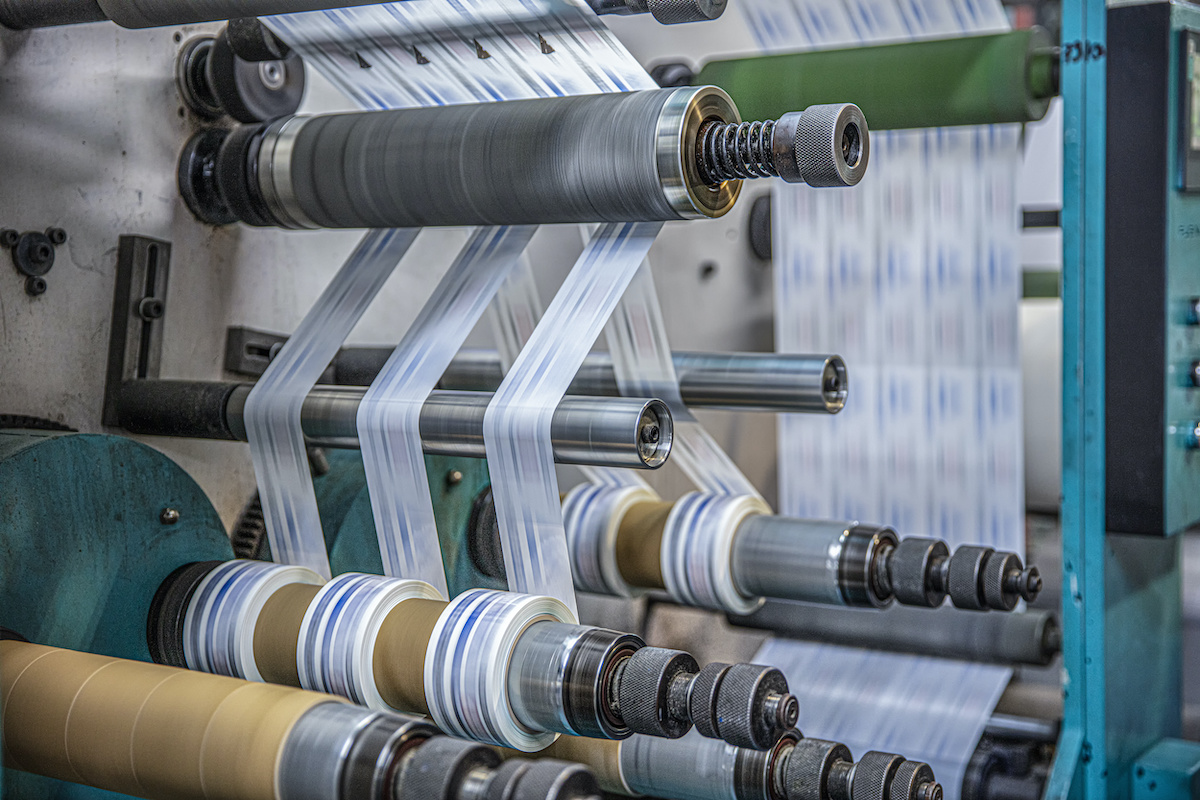Today’s rotary die cutting machines are built to guarantee precise and accurate die cut through materials such as film, paper, or tag stock. It’s not uncommon for a die to successfully last millions of revolutions of die cutting in its lifetime. Due to this high-volume capacity, it is essential to keep up with routine die cutting machine maintenance and address any minor problems early on to keep the unit always running smoothly and efficiently.
Die Cutting Machine Maintenance Tips

Even the world’s highest quality rotary cutting dies are not immune to everyday wear and tear. If a die cutting machine is not properly and periodically maintained, it is only a matter of time before small problems can turn into major downtime. A die-cutter that runs past its normal resharpening schedule can lead to complications.
As any trained web handling expert can attest, unplanned downtime can be detrimental to your bottom line. But by keeping a close eye on your die cutting operations and taking steps necessary to avoid complications, you can keep your die-cutter operational for a long time. Below are a few best practices for die cutting machine maintenance.
1. Cleaning
Your die-cutter is not impervious to dirt or debris accumulation, so you’ll want to give it a proper cleaning at the end of each run. Ensure substrate fibers, adhesive, and ink residue are cleaned from major components such as the:
- Rotary die body and blades
- It is recommended not to use metal tools for adhesive removal, wooden tools are highly suggested due to less of a chance to damage blades.
- Chemical cleaners must not exceed a PH 10, it could pit blade tips or remove proprietary coatings due to acidity.
- Anvil cylinders
- Always clean the surface and inspect for scratching or dents. Always inspect the bearer area for wear, keep well oiled.
- Bearer areas on both the dies and anvils control cut quality, keep cleaned and always oiled
- Gears must be inspected on a regular schedule for cleaning. Oil and paper dust will build up in gear teeth and could cause registration issues.
Too much adhesive build-up on the rotary die can affect the machine’s performance and yield inaccuracy such as deep die strikes or lifting labels.
2. Alignment and Calibration
Over time, your die cutting machine may lose the precise calibration needed for registration and cut quality. This can be due to debris buildup (as mentioned before), general wear and tear on one or more components, or another extemporaneous factor.
We recommend running a QA test during each machine scheduled maintenance check or every so often during downtime to ensure that the machine is operating as it should. This may include checking the gaps of all magnetic cylinders every six months, recording changed values, and regular bearing and die station inspections.
3. Storage
Die-cutter maintenance also includes proper storage practices. When a die is not in use, after cleaning, keep it stored safely and securely to avoid accidental drops, dents, or exposure to damaging elements. Best practices may include wrapping each die in oil paper and storing them in protective hanging bags, cardboard rolls or flat boxes or our recognizable blue boxes.
Whether your machine is running solid cutting dies or flexible, make sure to treat them with a light coating of acid-free oil before storage. If your die becomes damaged or prematurely dull from improper storage, it will need to be either repaired or replaced. Replacements and downtime can be costly, which makes proper storage an important part of die maintenance.
4. Handling
While cleaning, or storing, handling dies correctly is extremely important to preserving their original quality and effectiveness. Bending a flexible die, placing the die blade side down or other mishandling can cause damage to the blades or cylinder. Incorrect handling can also become a safety risk in extreme circumstances.
Professional Maintenance
Occasionally, you may run into issues with your die-cutter that are out of your control and cannot be rectified with simple in-house maintenance procedures. In these cases, you’ll want to contact a manufacturer for guidance. At Maxcess International, we offer repair and refurbishment services for all our products at service centers around the globe. If your die cutting machine ever fails to perform at the level your organization requires, contact us today for industry-leading die cutting machine maintenance and support visits.